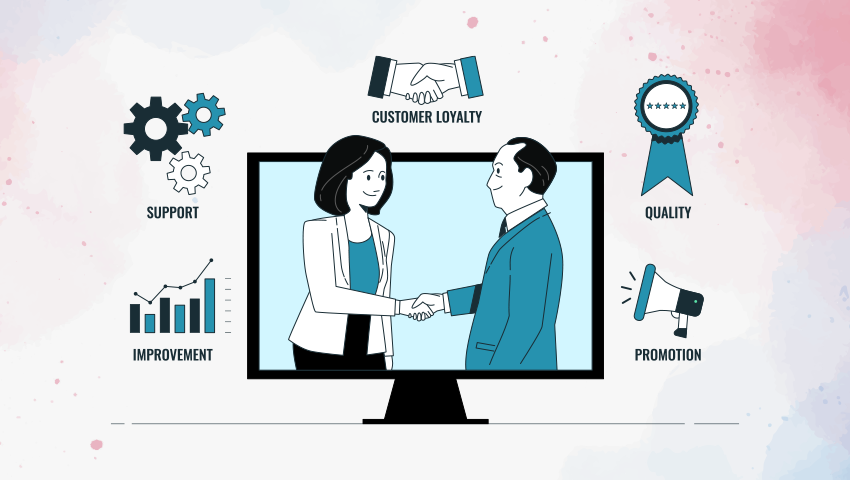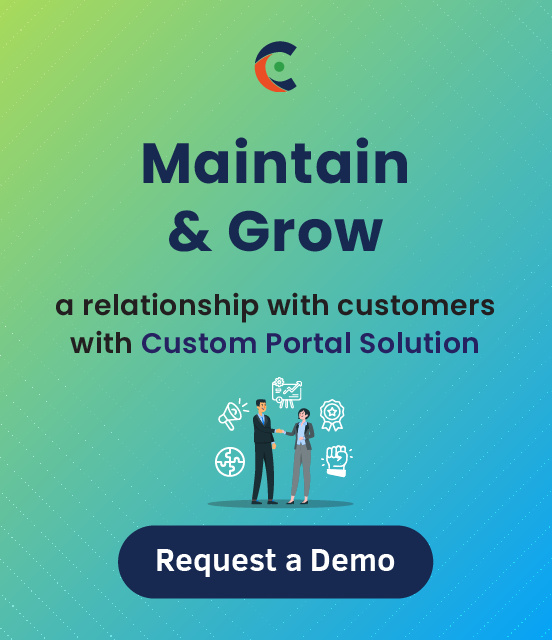While WordPress started as a blogging tool, it has evolved into a website builder and content management system. Many small and mid-size businesses use it to build an online presence and grow with time. However, to manage customers, a website alone is not enough. The integration with SuiteCRM offers limitless possibilities. For instance, you don’t have to manage anything manually. There is a centralized solution to store and retrieve customer data. Process automation, sales forecasting, email integration, and interaction tracking are a few of the other benefits that SuiteCRM integration offers.
When everything comes down to customer experience, there’s nothing better than having a customer portal. A SuiteCRM customer portal provides a centralized solution to manage customers, resolve issues, and access crucial information round the clock. It also provides multiple channels to communicate with the company representatives. You can offer a knowledge base to help them resolve queries instantly with relevant articles and documents. You can also integrate SuiteCRM modules by limiting the access – decide who can access what modules and who can’t.
There’s a lot more you can do with the SuiteCRM customer portal for WordPress. Let’s find out.
1. Automatic Lead Generation
When a user registers in the portal, the integration will auto-generate a lead that syncs directly in the CRM. It will store all the information, including user data, address, reason, and more. This helps your customer representatives to attend to customers and resolve queries instantly. Besides, the workflow is automated. It means no one has to manage the lead count manually or track it all the time.
On top of that, the portal offers drag and drop dynamic widgets and templates to create lead forms, surveys, feedback, and more. These forms can further allow you to create leads and opportunities automatically when customers fill the form. You can also customize these forms to reflect your brand image.
2. Performance Insights
A SuiteCRM customer portal enables tracking of leads that have interacted with your brand in one or the other way. It collects all the data, including their activity on your website and their interaction with you. You can also view the entire business details such as lead count, interaction, traffic, cases, staff performance, ongoing activities, etc. on the dashboard. All this information together gives you clarity about your business processes and streamlines it.
As for customers, they can view the case and quote charts module and know their status. Portal also helps manage invoices, quotes, and contracts in one place to avoid confusion and enable businesses to make sound decisions.
3. Self-Service Interface
According to the Microsoft Dynamics 365 community, 90 percent of customers prefer businesses to have a self-service portal as they prefer solving queries on their own without having to contact customer support reps.
SuiteCRM customer portal provides a self-service approach to customers, i.e., they can generate their tickets without asking a support person, read articles, access knowledge base, manage their profile and invoices, and do a lot more. With a knowledge base, they can solve their problems themselves, that too, quickly. If they can’t find a solution, they can contact the customer service representative through internal calls and chat without leaving the portal. This ensures that customers can find the solution conveniently. Further, it eliminates the back and forth communication and the need to switch between different channels.
Self-service interface reduces the effort and time of your support team. It saves you from allocating extra resources for support and also reduces the number of abandoned calls and waiting time from the support.
4. Dynamic Module Support
SuiteCRM provides multiple modules, including documents, cases, customers, orders, which you may or may not require. Won’t it be good if you can configure those modules as per your business requirements?
Certain SuiteCRM customer portal provide all the SuiteCRM modules and allow users to enable or disable a module with a single click. You can configure custom modules from the back without having to spend extra. The configuration ensures that you only use the tools that you require and thereby curbs the confusion.
Apart from customization, you can also manage and view all the modules in the calendar. It means everything from calls and appointments to activities and cases can be viewed from one place.
5. Dynamic User Accessibility
Once you have configured the modules, you need to give users access to those modules. For this, the SuiteCRM customer portal offers a role-based accessibility feature. With this feature, you can restrict access to a specific module, including custom modules for specific users. Therefore, the access rights can be on a ‘need to access’ basis.
To simplify access management, the SuiteCRM portal allows adding portal users to specific user groups. You can then give access to specific user groups rather than individual users. This helps build trust among customers.
6. Case Deflection
Another feature of SuiteCRM customer portal is that your users will be able to serve themselves by typing out their queries. Once configured, they can search for a query in the system first instead of adding a new case. If the case is already available, they can go through the solution and resolve their query without any help from the support team.
Case deflection feature helps manage customers and their queries while reducing the burden on your support team. Also, it helps you track their performance by eliminating the need to solve queries on repetitive tasks.
7. Single Sign-On
“Forgot password” is another challenge that most businesses face. Customers find continuous logging in the systems irritating. Hence, to save them from memorizing passwords, SuiteCRM customer portal provides single sign-in, i.e., users who have signed up for your WordPress site can access the portal with similar credentials.
And when a new user registers for the portal, the system will verify whether a user with the same username and email address exists or not. If not, it will create a new account in WordPress and SuiteCRM contacts module. Users can then use it to log into all the sites.
8. Mass Credentials
When you integrate and set up the SuiteCRM portal with your WordPress, you will have a bulk of customers who need login credentials. You can’t generate and send credentials to each individual separately. Therefore, the SuiteCRM customer portal allows you to generate mass credentials from the CRM and export them in CSV format. You can then import these contacts to your portal and convert them into portal users. Later, you can send emails to all the users with their respective credentials. This helps complete the tasks that could’ve taken a few days, in a few hours with SuiteCRM customer portal.
Auto-generated credentials also provide one more benefit, i.e., there are no human errors in the credentials since they are system generated.
9. Quotation Management
Customers can create proposals, select products from the catalogs, set quantities, and share it with the team. If the specific products are not available in the catalog, they can even request it. Customer support team, on the contrary, can decide whether to accept or reject the proposal. They can view the proposals and take actions accordingly.
10. Backend Configuration
With the SuiteCRM customer portal, you can change the brand logo, color, and other records that would be displayed on the portal. You can customize display options such as theme or calendar module color.
Customization of standalone template design is also possible in the SuiteCRM portal. Plus, customers can change their profile pic and configure the look of the portal by changing colors and themes as per their convenience.
11. Invoice Management
One of the major benefits of SuiteCRM integration is third-party plugins. SuiteCRM is compatible with multiple plugins, and with the payment-on invoice plugin, you can send invoices, make payments, and manage all the payment-related activities from one place. Another advantage is that customers don’t need to switch or look for additional platforms to manage their payment-related activities.
You and your customers can also view payment transaction history, including transaction type, status, amount, etc.
What More Does it Offer?
An organized communication channel to communicate with partners, investors, customers, suppliers, support team, etc. A centralized solution that minimizes delays in the customer query resolving with ticket management, case deflection, real-time information, and self-service.
A SuiteCRM customer portal offers many benefits, including customer satisfaction, increased customer engagement, reduced workload, and operational costs. We can help you with a custom solution that helps you leverage all these benefits.
All product and company names are trademarks™, registered® or copyright© trademarks of their respective holders. Use of them does not imply any affiliation with or endorsement by them.




